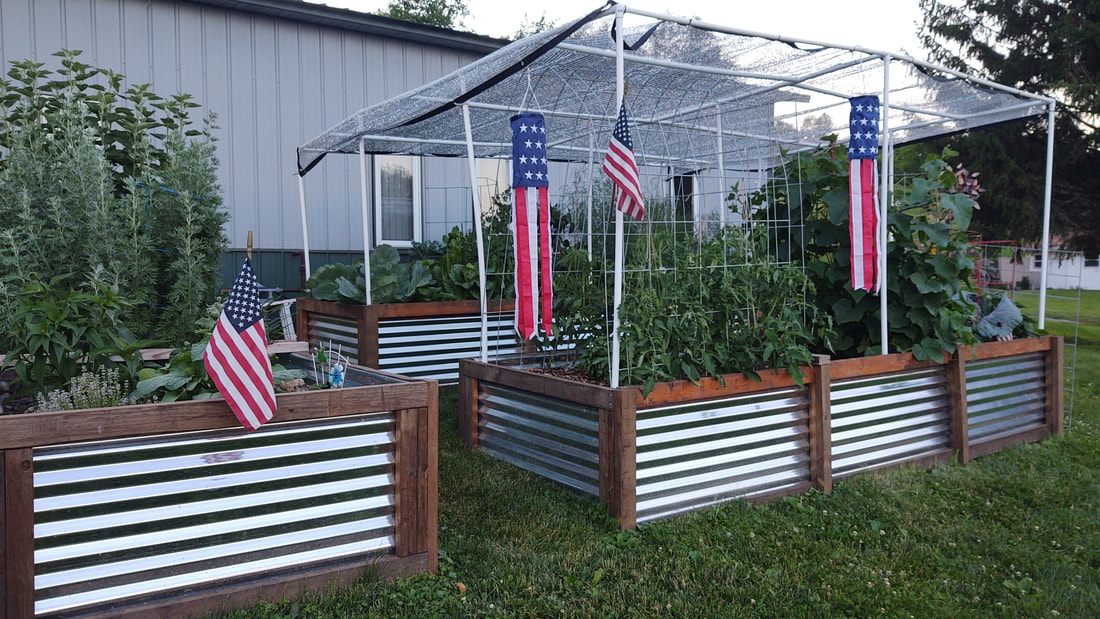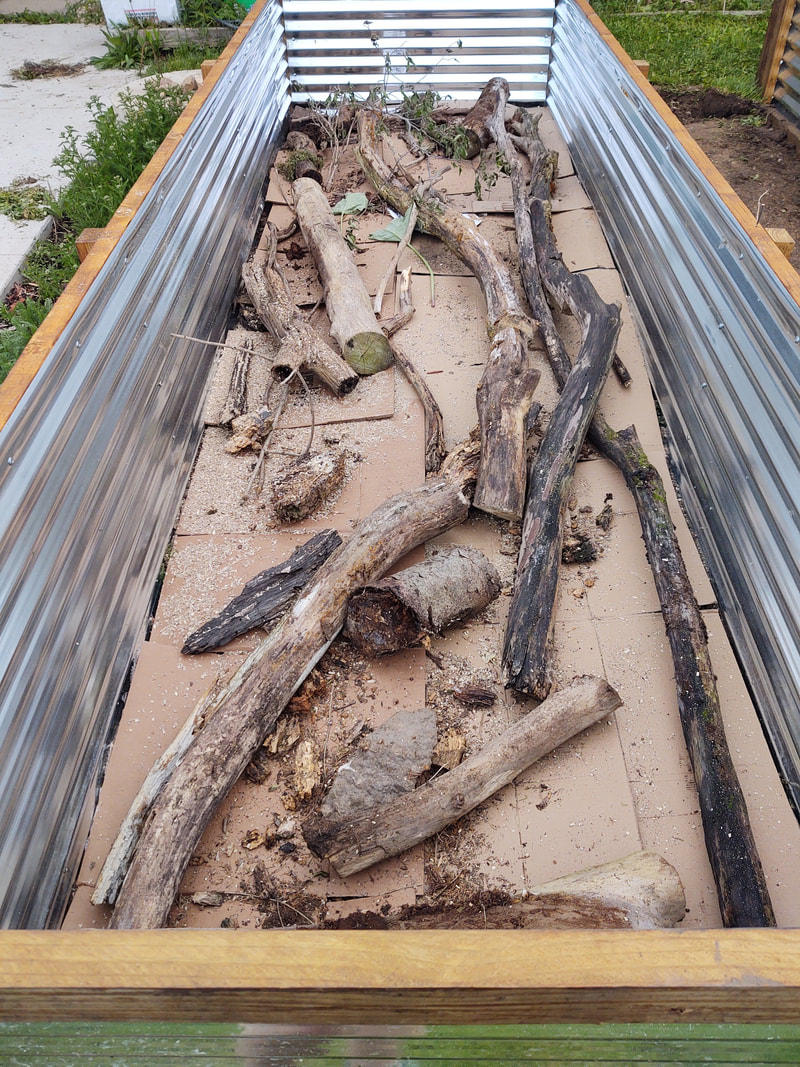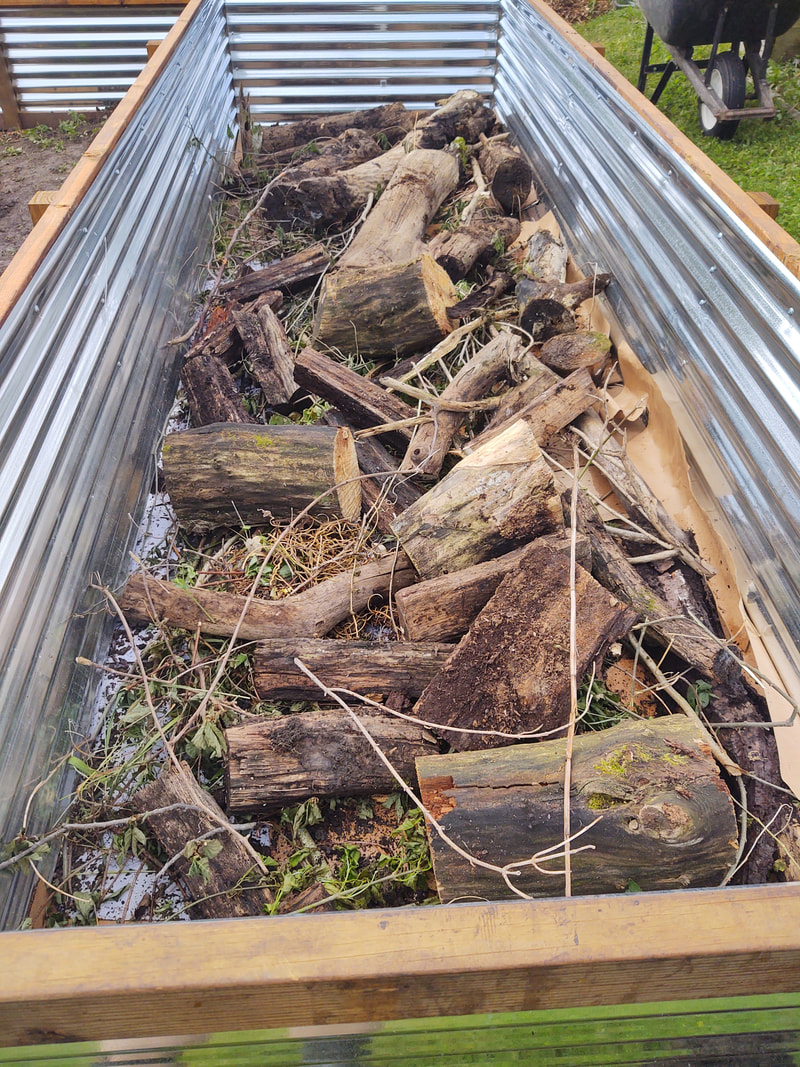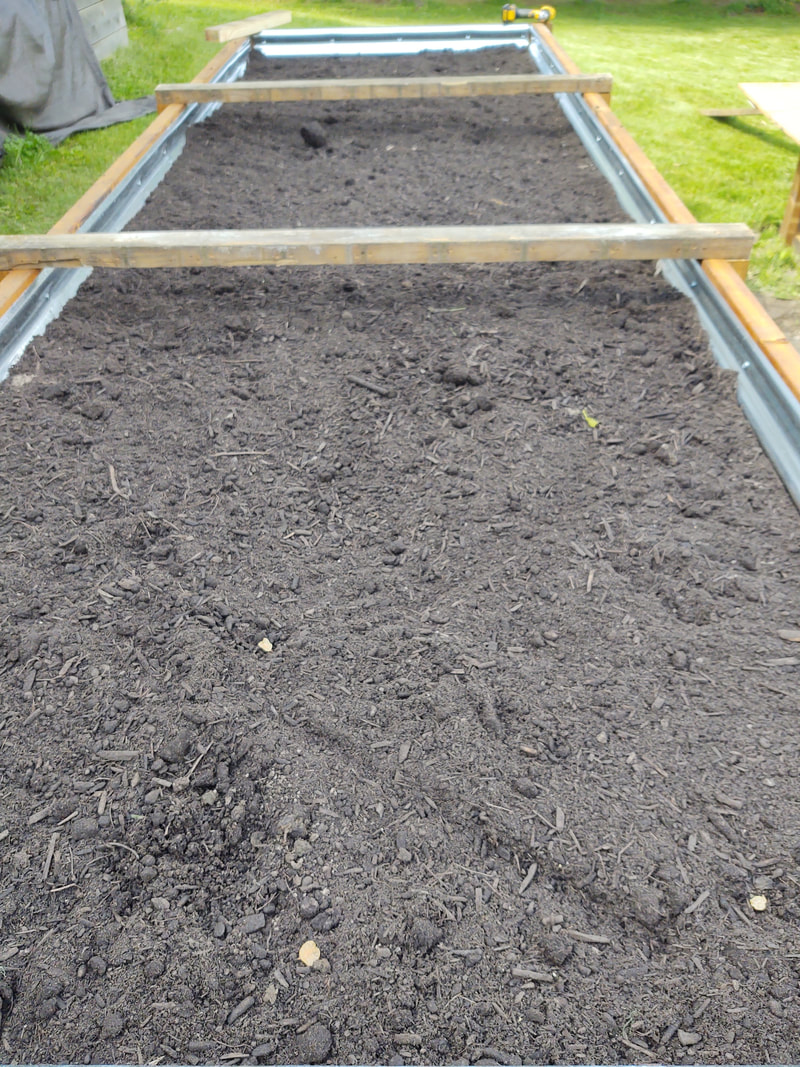
If you enjoy gardening, perhaps you can relate. While you wait for warmer weather, consider what may make the food growing process easier. Last year I went "vertical" with my tomato gardening and used strong cattle panels as trellises - see photo above. No more toppling of those weak tomato cages when the plants are heavy with fruit! Because I grow in raised beds the panels were easily shaped into an arch.
The raised beds were built for me in 2021 and have been such a blessing for my back! It is a pleasure to work in the gardens, pruning and training plants in the growing season. If you are planning to build raised beds, consider making taller raised beds! We used Hugelkultur' to fill our 2 foot tall beds (see photos and video below) - the bottom half of which was rotting logs, branches, bark and nutritional weeds and herbs for rich soil. Granted, these were all readily available on the wooded hillside in my backyard. We topped the remaining 12 inches with "black gold", known in these parts as Purple Cow organic soil. Fortunately, we have a local source for bulk purchase.
Hugelkultur' has been wonderful for us! The soil is so rich in nutrients. Adding in the nettles and comfrey is something I had learned as a self-taught herbalist. I share this tip with seasoned gardeners, who are not versed in plants that are nutritious for the soil. In the fall, I harvest more comfrey leaves from my huge plants, and work them into the soil in late fall.
Regarding Hugelkultur' the ONLY thing I would have done differently, in hindsight, would have been to put a quarter inch wire mesh at the bottom of the raised beds to prevent critters such as moles from working their way up. We had that issue last year, especially around the carrots. I discovered an organic powder called milky spore which I sprinkled a teaspoon on top of the soil every square foot, before a rainfall, and it addressed the mole issue.
For those who grow tomatoes on the ground, or in the field, you will want to put in metal fence posts and secure the cattle panels to the fence. Keep in mind that you want vine type tomatoes known as indeterminate for vertical growing. Since I grow primarily to make sauces and salsa, I will be growing Amish Paste in 2023.
In the past I have always grown one tomato variety that is larger and great for sandwiches. However,I suspect there was some cross-pollination happening last year since heirloom tomatoes are open pollinators. Some of my paste tomatoes were definitely more like an Early Girl or Beefsteak variety. Non-uniform sizes on one vine.
One of my favorite garden channels on YT is Gardener Scott, and it was he who inspired me to use cattle panels for tomato gardening. He gardens in Colorado and has a shorter growing season like Wisconsin. He is no nonsense, is not selling product, and tells you practical ways to grow. He also shares lessons from his many years of gardening, some not so good. We all learn from making mistakes, which is why I will grow only one variety this year to see if they are uniform.
As you wait for the weather to warm up, it is good time to review videos on proper pruning of tomatoes for vertical growing. If you are starting tomatoes indoors, Gardener Scott has a great technique for developing a strong root system. Map out your garden, rotate your crops. Tomatoes are heavy feeders...so this year they will move into the opposite raised bed.
Spring is coming, and with it is gardening season. With all that has been happening in the U.S., I really encourage everyone to grow at least some of their own food, even if only containers on a balcony. Gardening is a health practice, as well. Remember, getting dirt under your nails IS a form of grounding...which is healing and resets your body. Clinical studies on grounding have proven that the act of going barefoot, or sitting on the ground, drains pain from the body.
This spring get dirty, and grow some food!
Rita S.








 RSS Feed
RSS Feed
